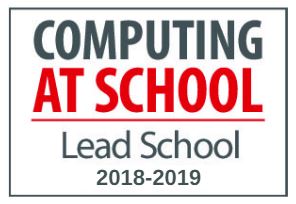Y9 Computer Science
 Head of Department
Head of Department
Mr J Evason
Students have 2 x 50 minute lesson each week in Year 9. Group sizes range from mid 20s to low 30s.
Key Concepts (The big ideas underpinning the subject)
- Understand how to write algorithms that use sequence, selection and iteration
- Develop algorithmic thinking skills
- Understand how the digital world is represented, including data and communication
- Understand the use of databases to model real-world scenarios
- Understand the use of agent-based models to model real world scenarios
- Understand how data structures are used within Computer Science
- Understand a range of standard algorithms and their use in Computer Science
What will your child be learning?
In Year 9 Computer Science, students will study:
Text programming: Explore the use of sequence, selection and iteration constructs to create algorithmic solutions to problems. This will extend knowledge and skills developed using block programming languages.
Data representation: Learn about how different types of data are represented inside computer systems. Such as numbers, text, images and sound. Explore the components computer systems are made from and understand why binary is used to represent data.
Modelling: The overarching concept is representing real world scenarios with an abstraction. Starting with an exploration of databases, flat-file and relational databases, including the process of normalisation and its benefits. Then moving on to non-deterministic and agent-based models. Students will create subroutines to control simple behaviour and apply that abstraction to many agents all at once to observe emergent behaviour.
Data structures: “Algorithms + Data Structures = Programs”, the book by Niklaus Wirth gives the rationale for the next 2 units. This unit covers a range of fundamental structures and links them to real world scenarios.
Computational Thinking: Following on from the previous unit, students will learn about standard searching and sorting algorithms and how they are intertwined with data structures.
Key 'Learning Capacities' in this subject
- Be able to work both independently and collaboratively
- Develop the confidence to ask for help and answer questions in the classroom
- Be able to tinker and strategically discover solutions to problems
- Inspire students’ curiosity to learn more about the technological world around them
- Persevere with more challenging work
- Apply techniques learned in previous years and other subjects
How will your child be learning?
- Practical lessons
- Thinking for themselves using reason and logic
- Paired work and group work
- Individual teacher interactions
- Teacher instruction / exposition
- Learner discussion
How will learning be assessed?
- Checks for understanding (CFU), including Do Now Activities (DNA), use of Mini Whiteboards (MWB), low-stakes quizzes
- Formative assessments
- Homework
- Deep marking opportunities through the year
- Knowledge assessments
What can you do to support your child?
- Speak to them about what they have been doing in their lessons
- Discuss changes in technology and the impact on society
- Support them to develop healthy habits with the use of technology
- We ensure that the majority, if not all, of the software we use is freely available to students. If there is the capacity to make it available
Equipment needed for this subject
- Pen, pencil, rubber, ruler, calculator
Extra-Curricular/Enrichment Opportunities
- A wide variety of enrichment resources and materials: https://ulverstonvictoria.sharepoint.com/sites/ComputingIdeas
- Bebras computational thinking competition in November (in class and at lunch)
- Coding Challenge in March (at lunch)
